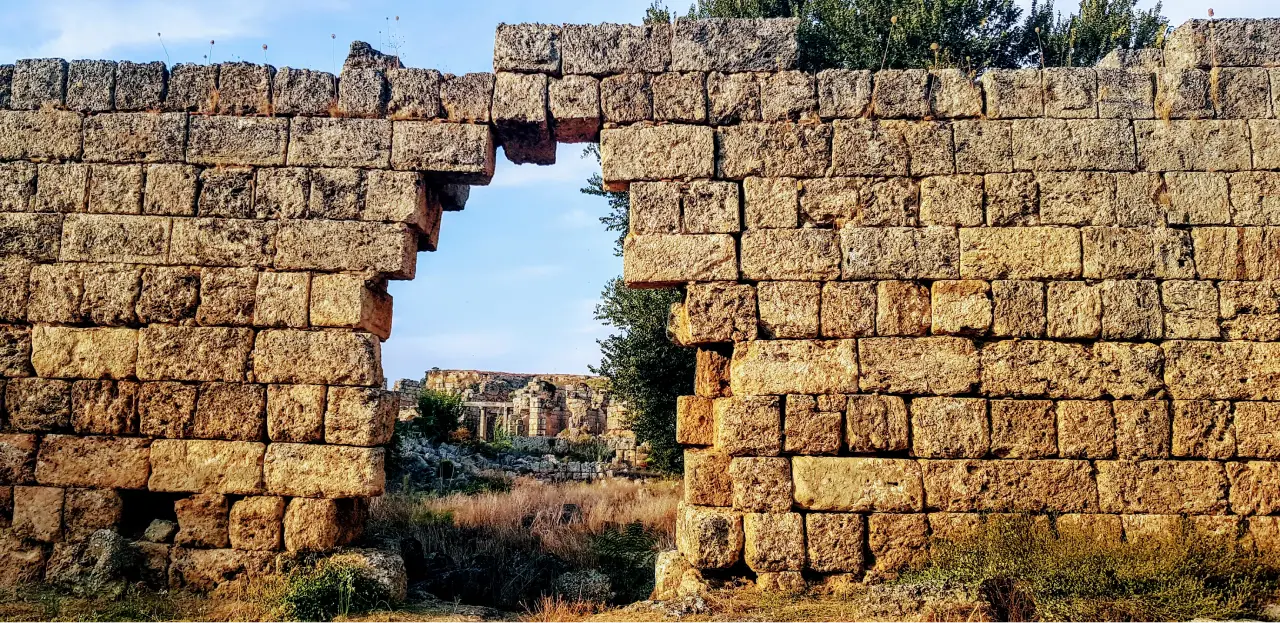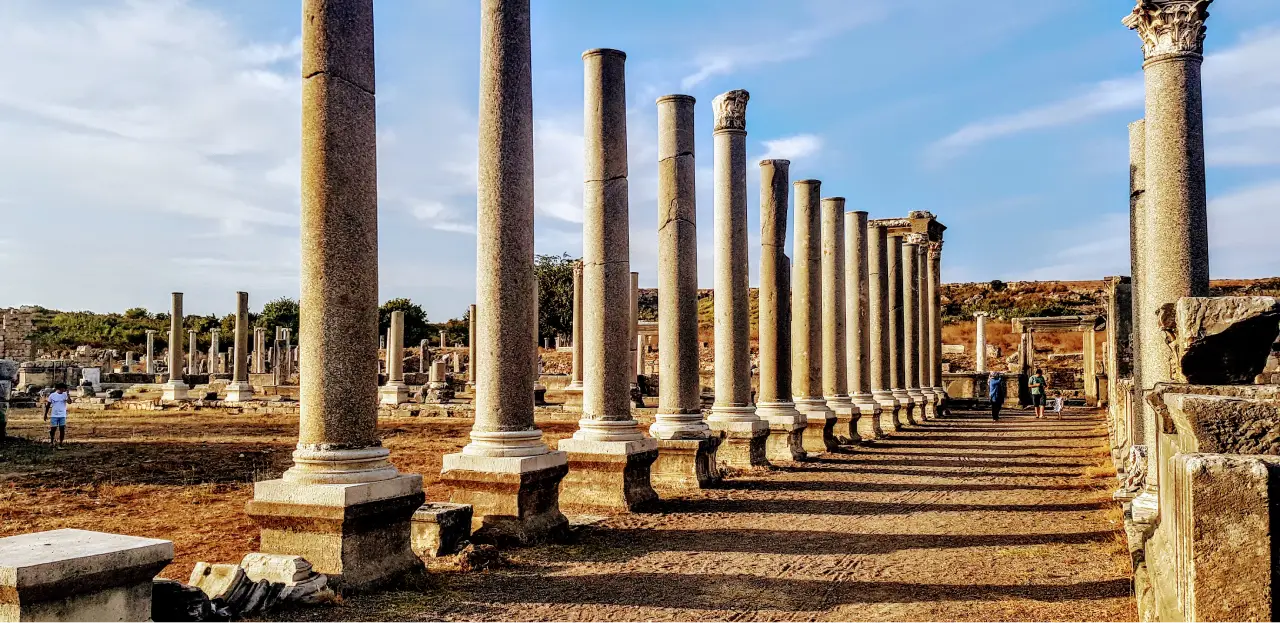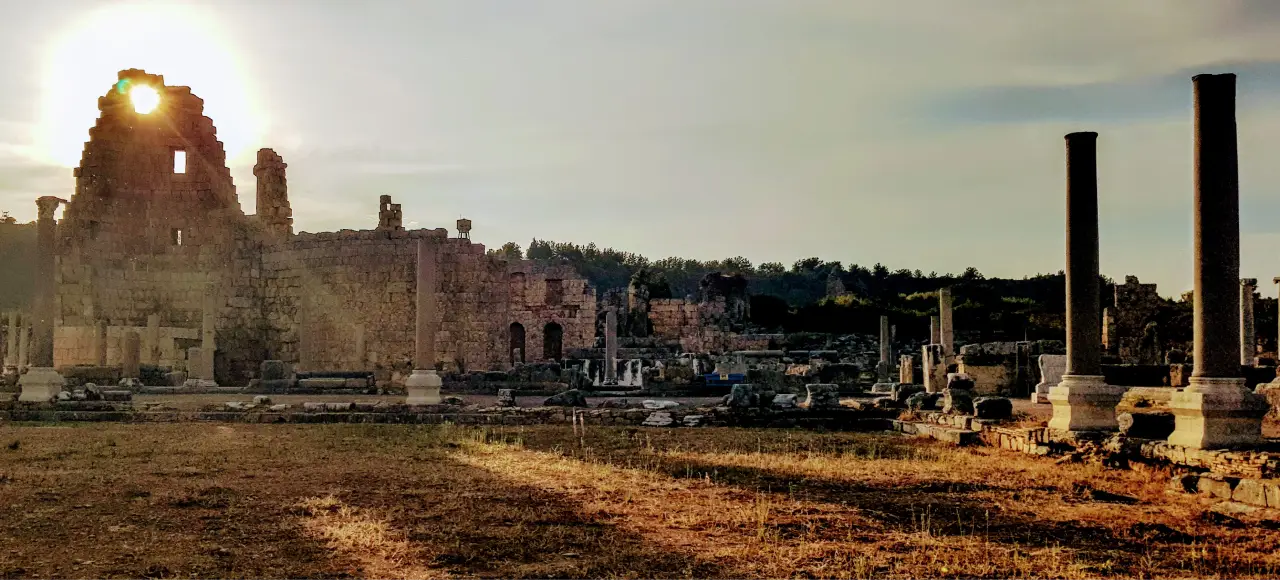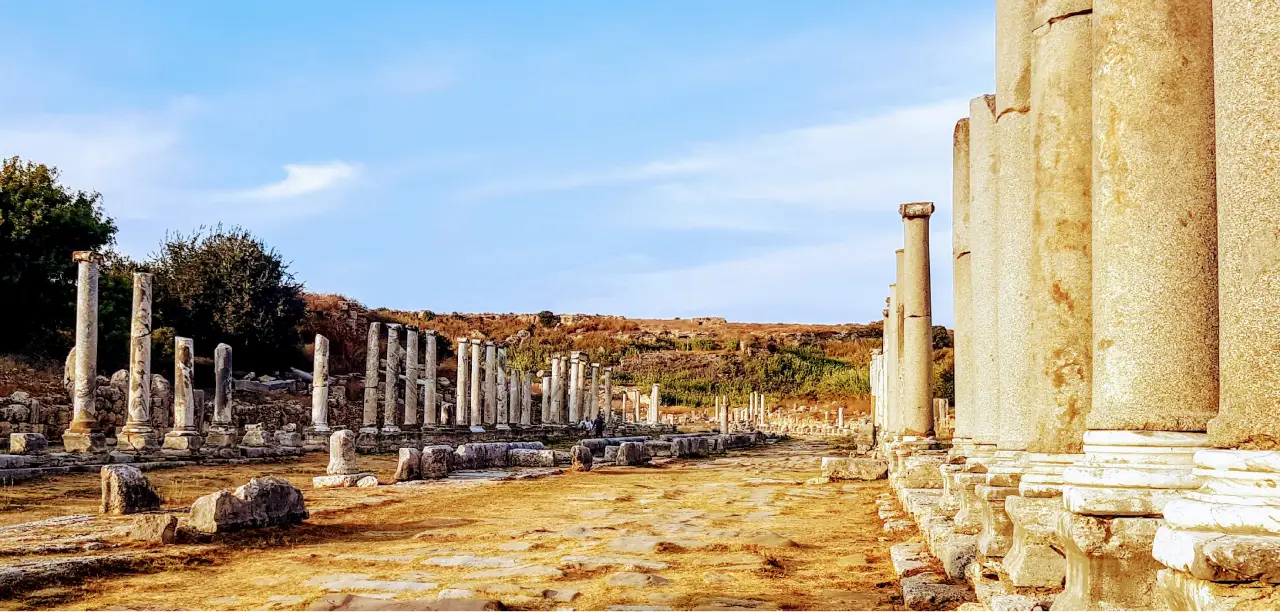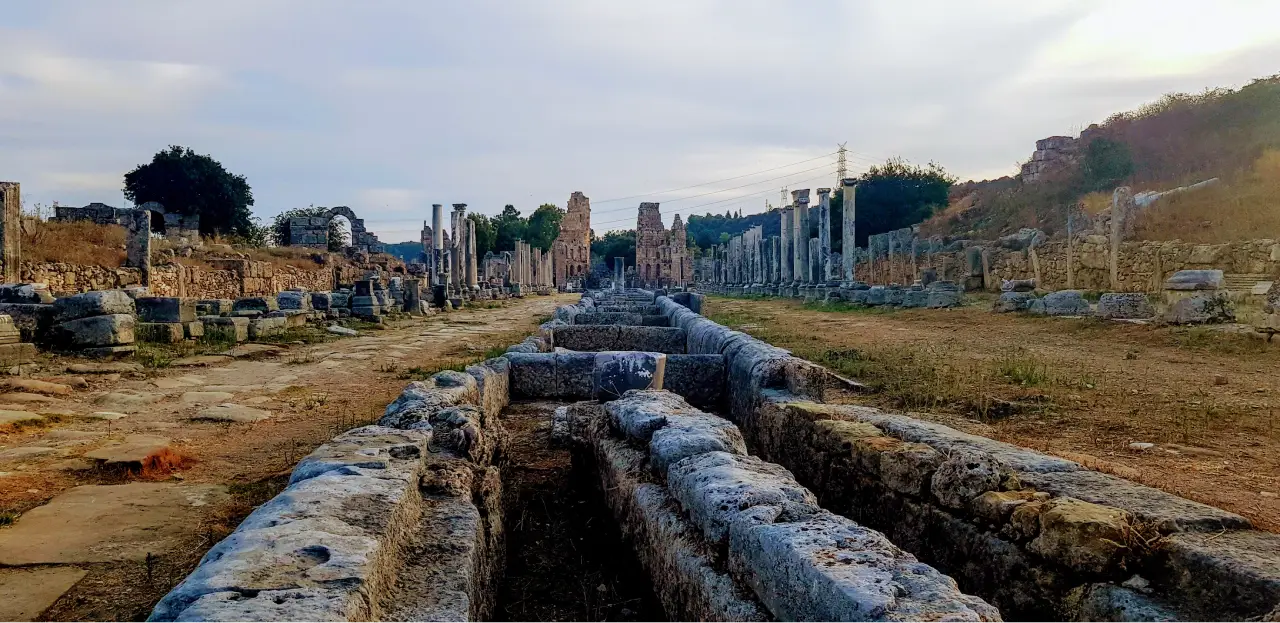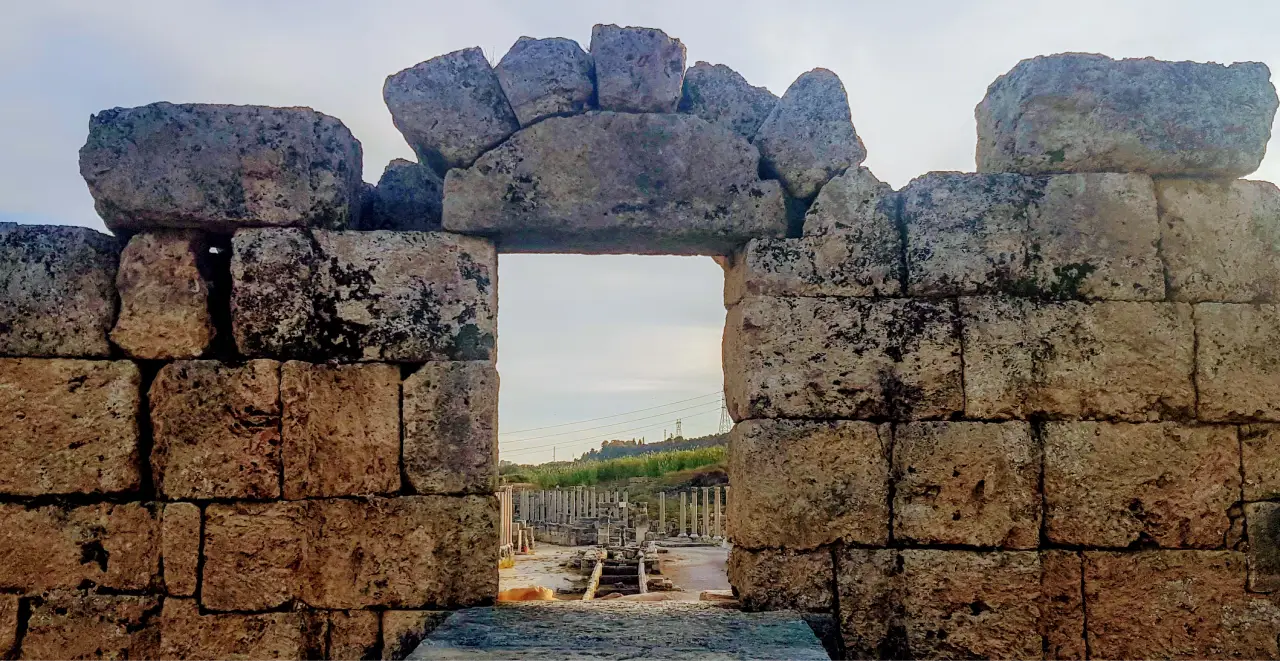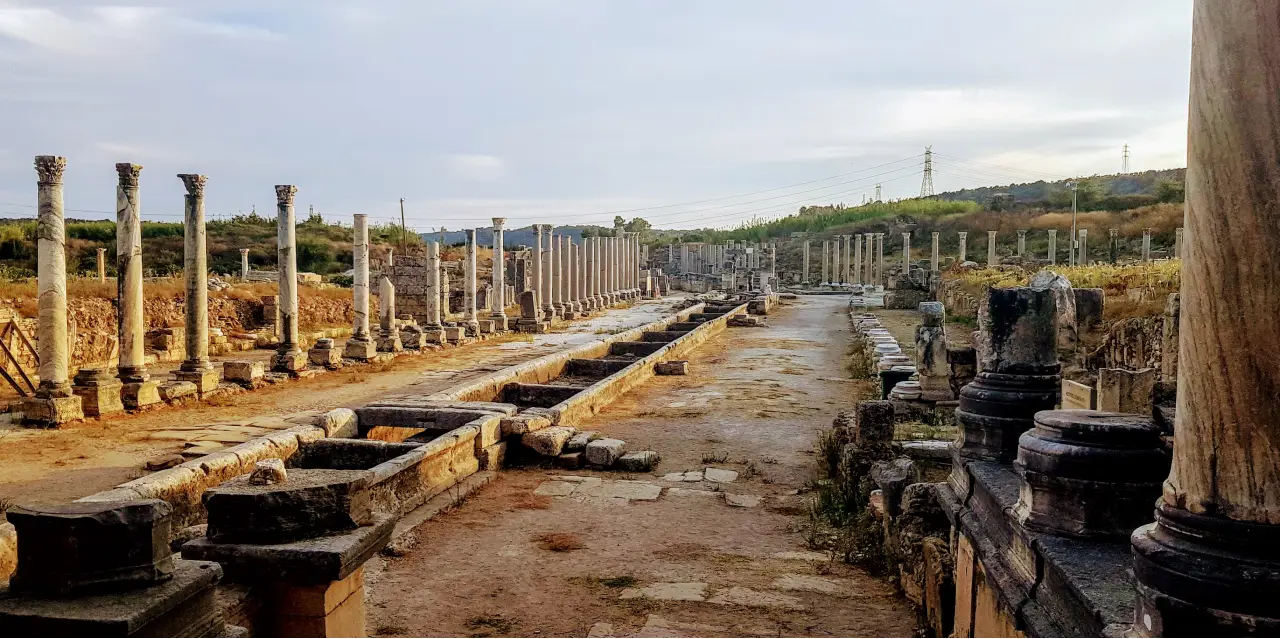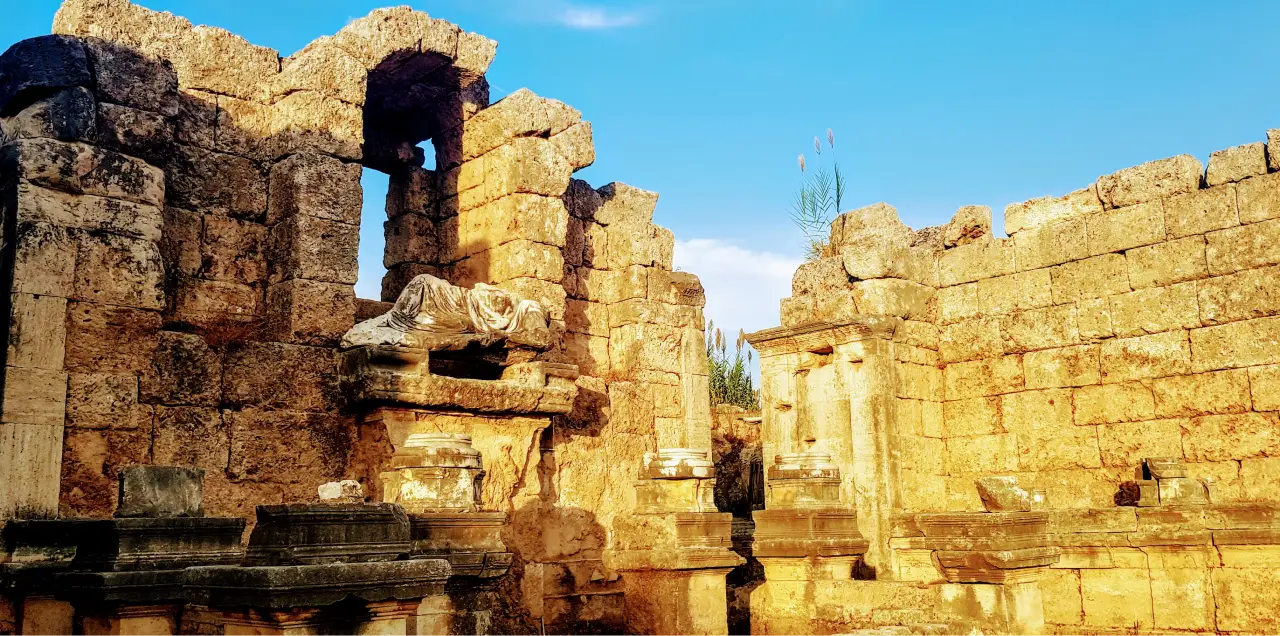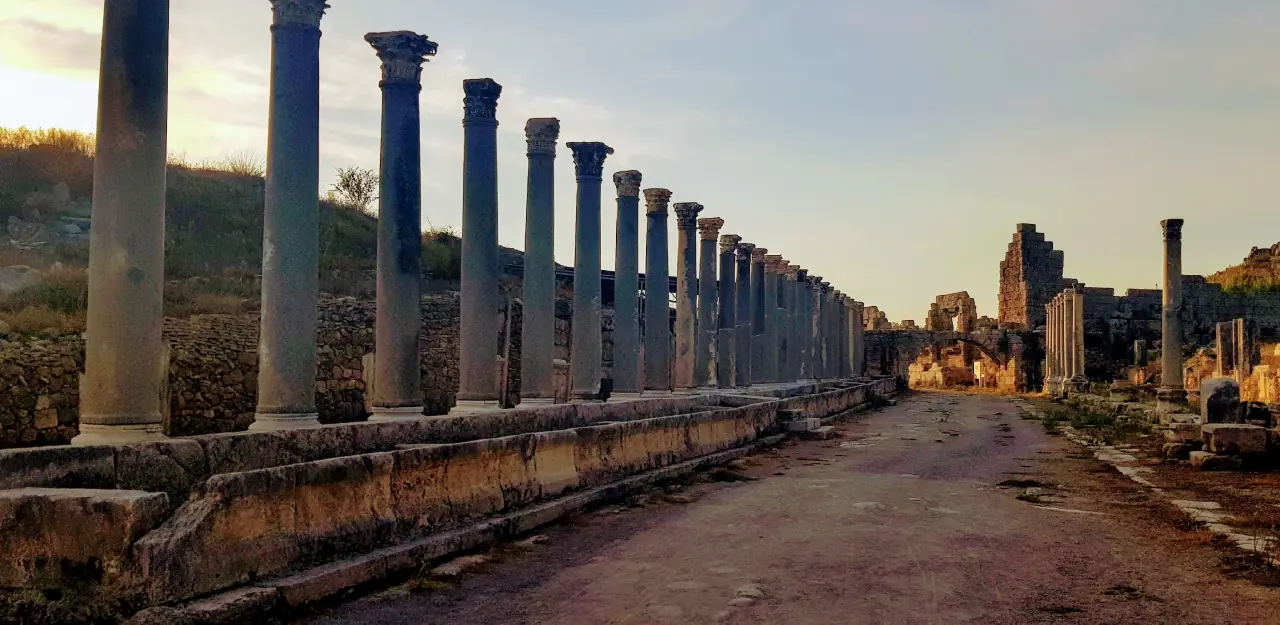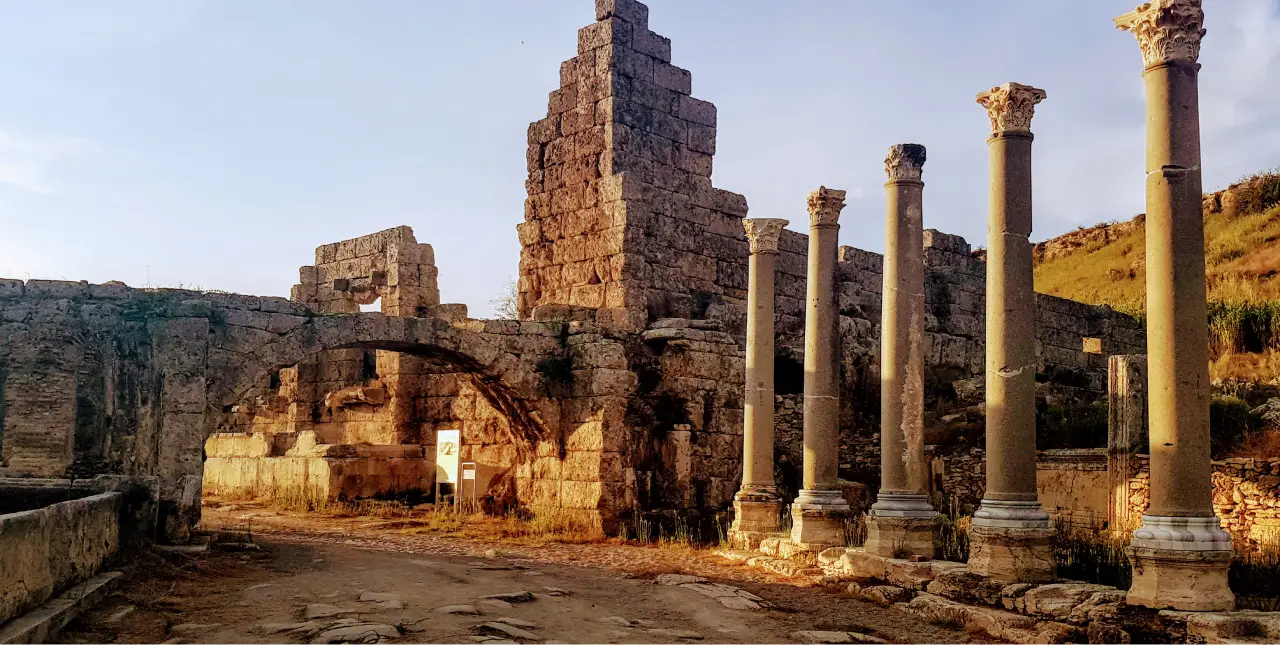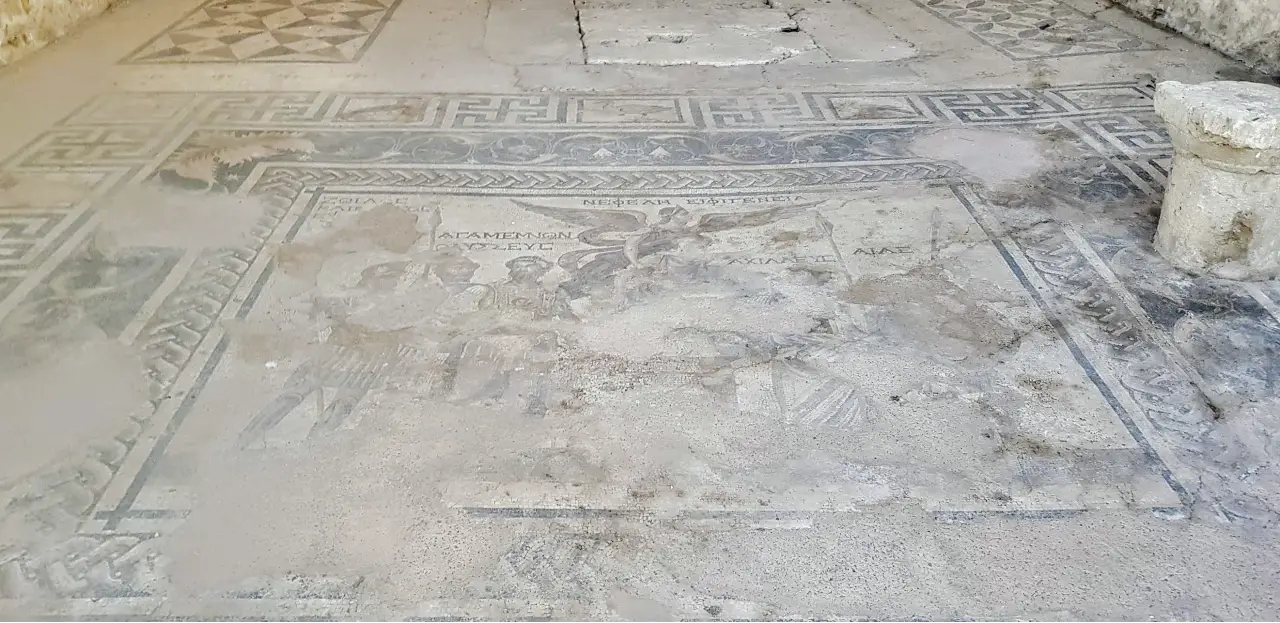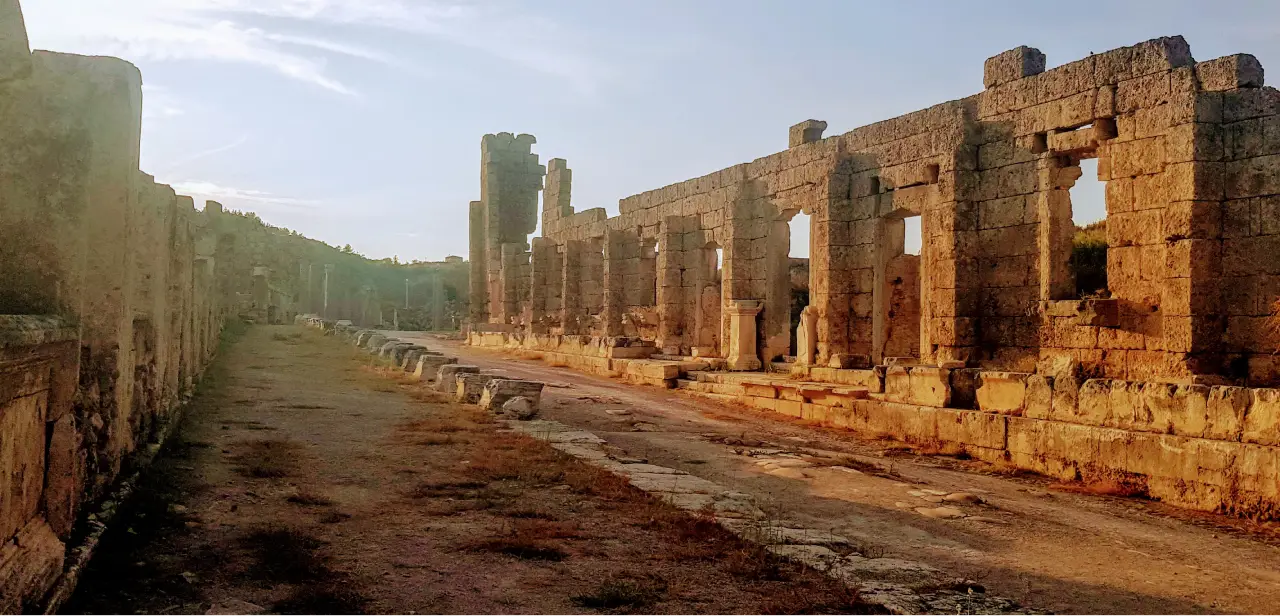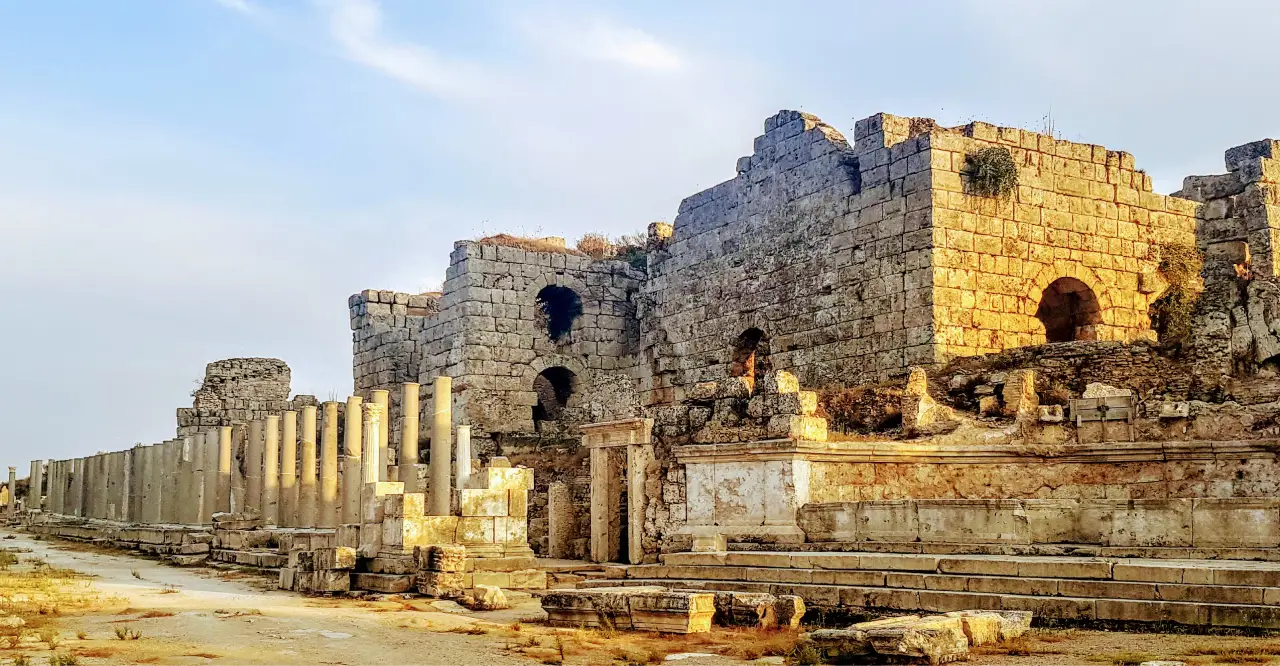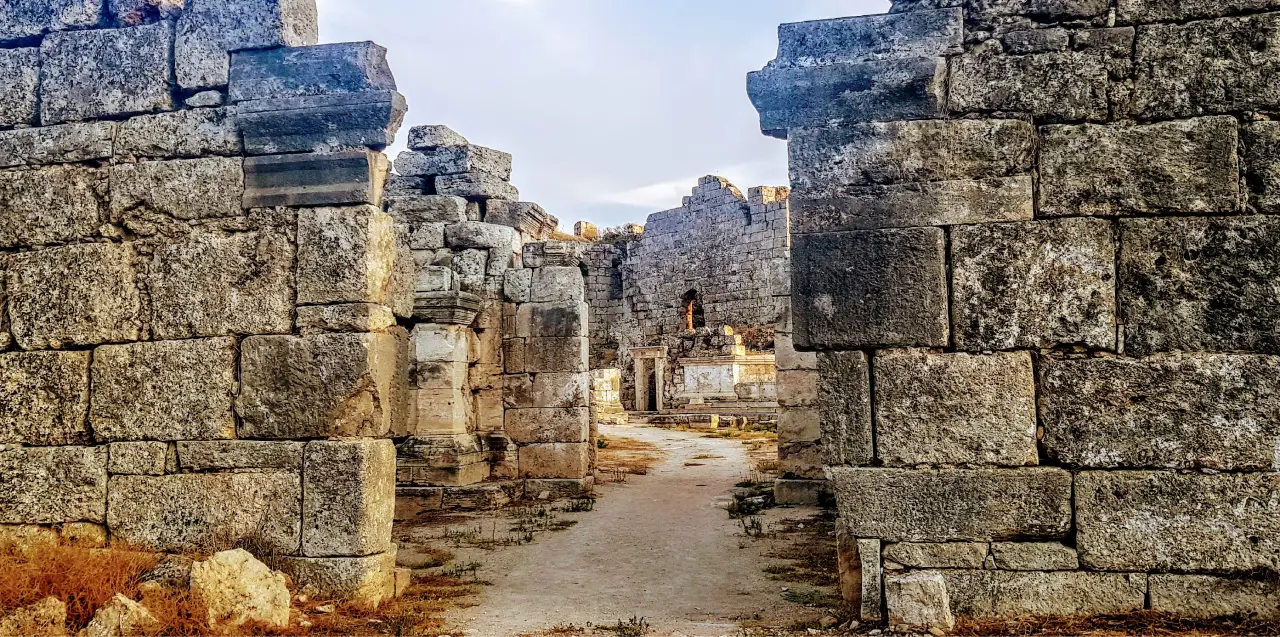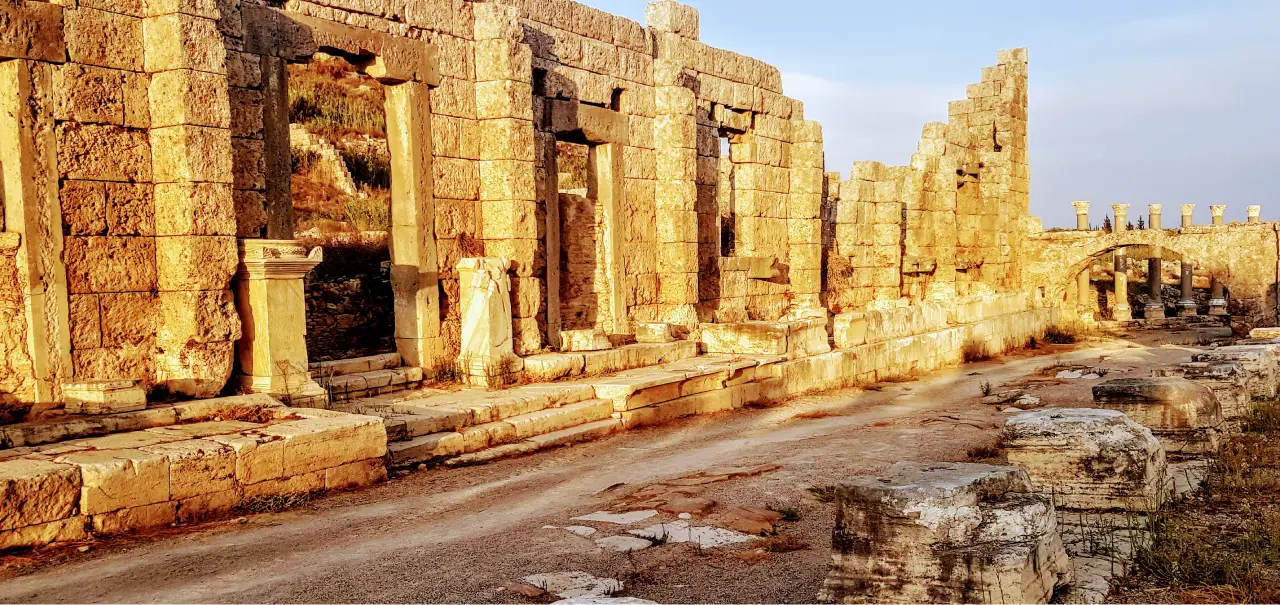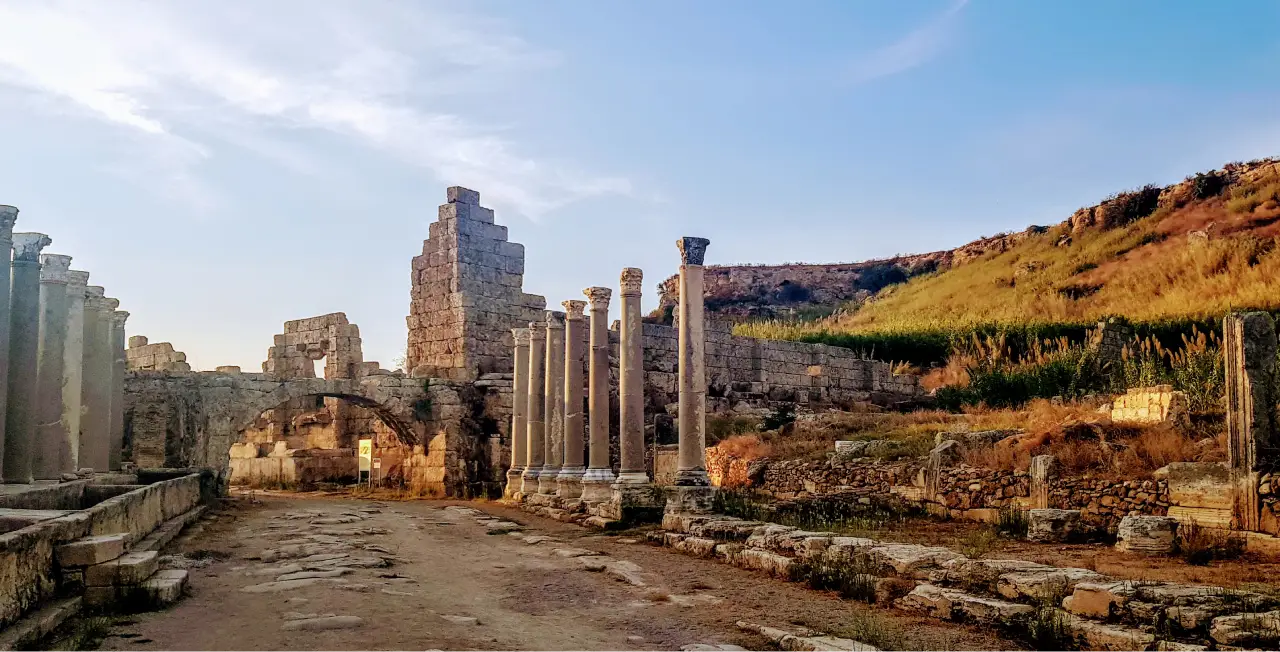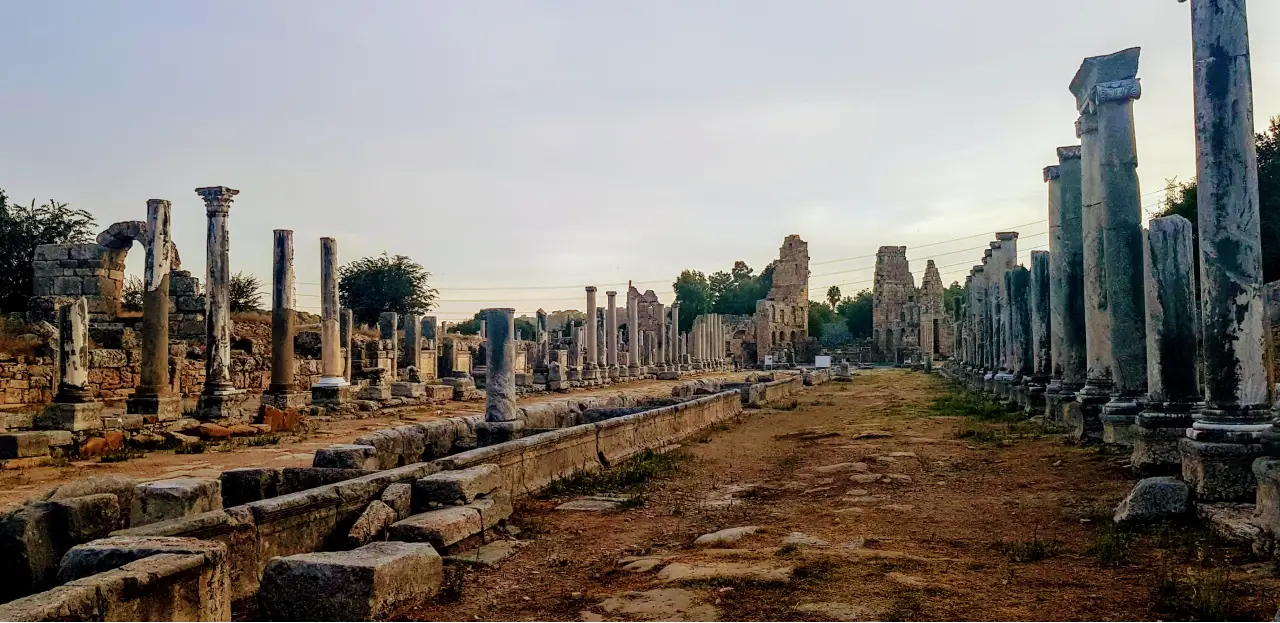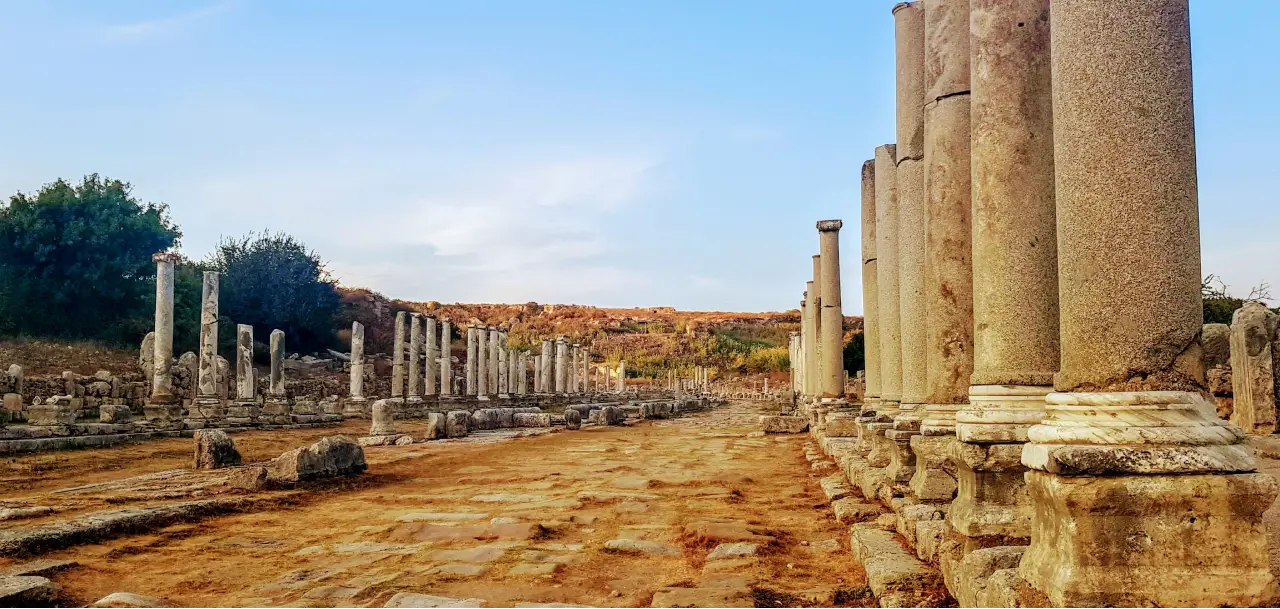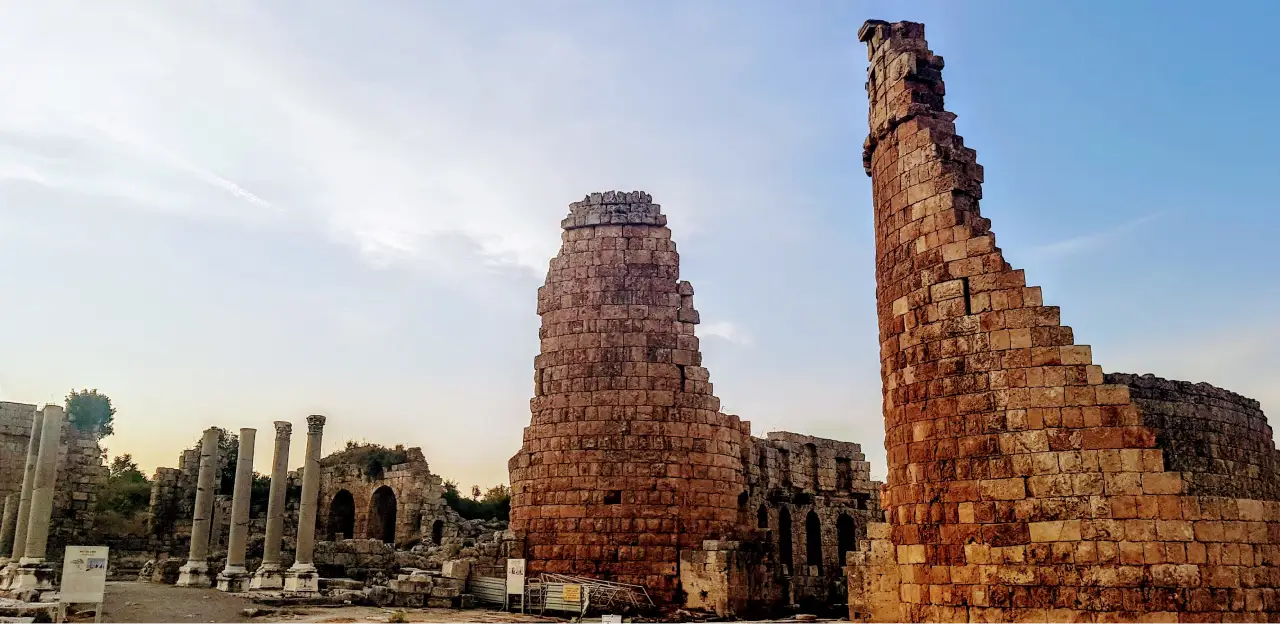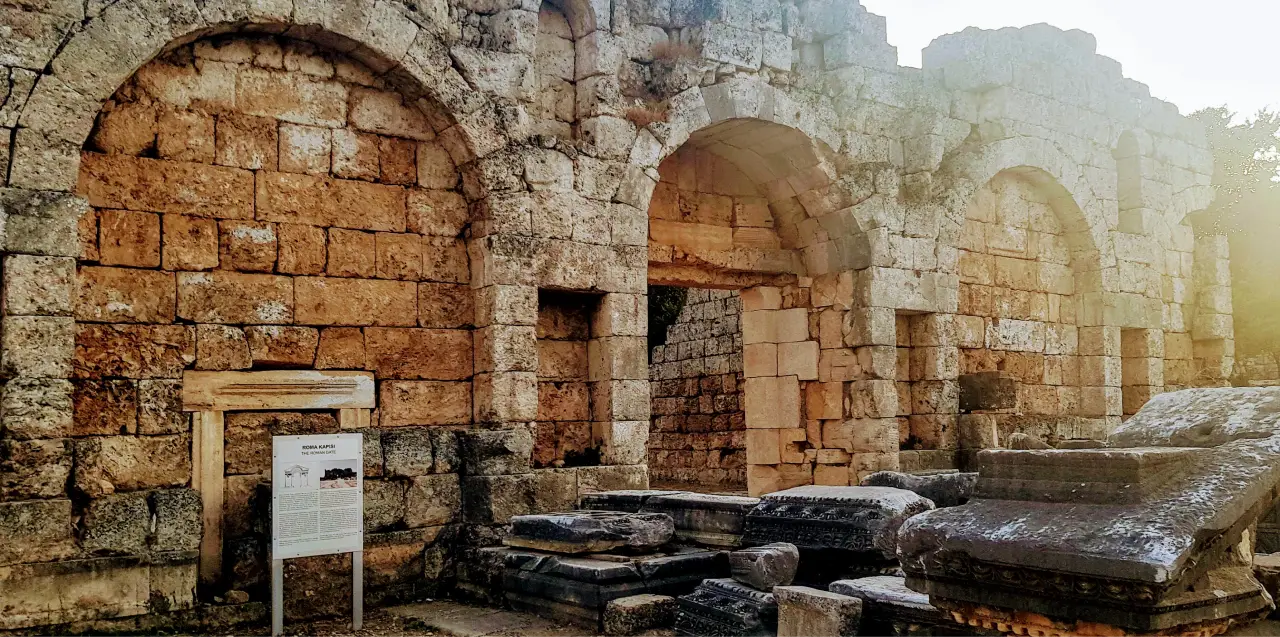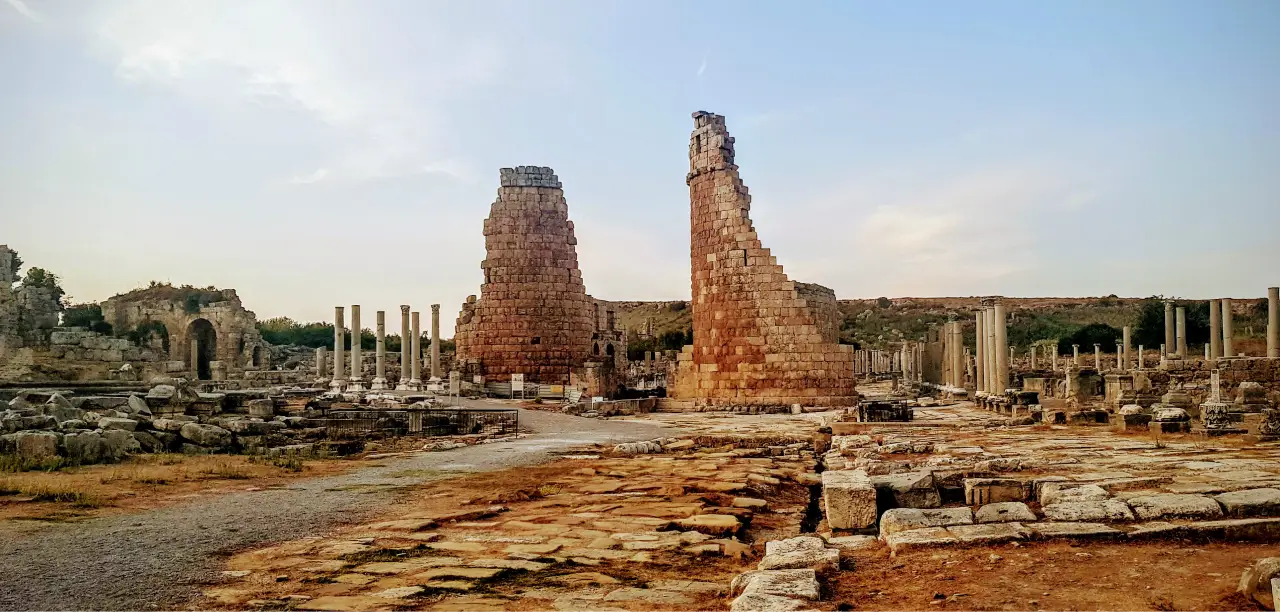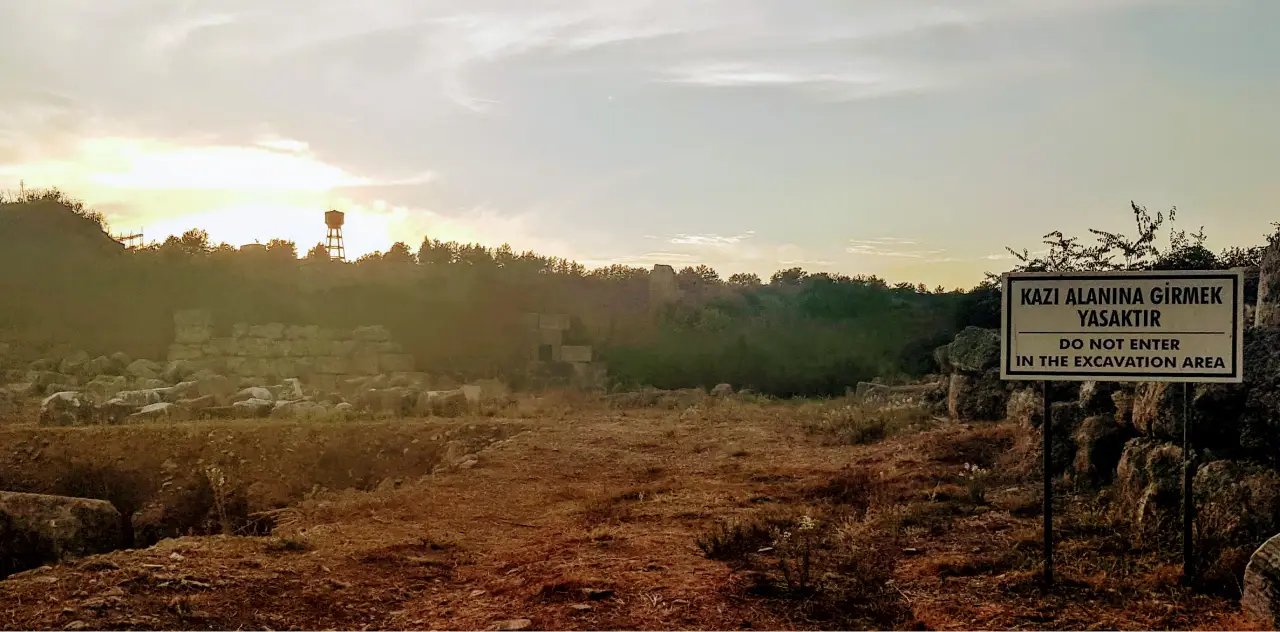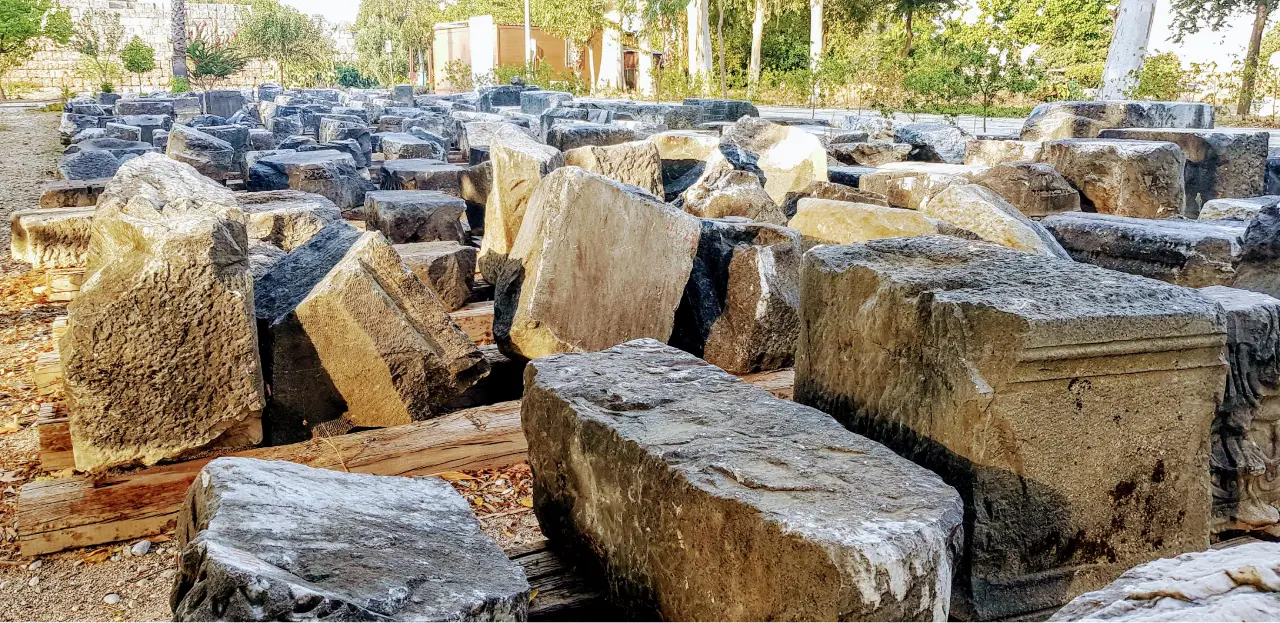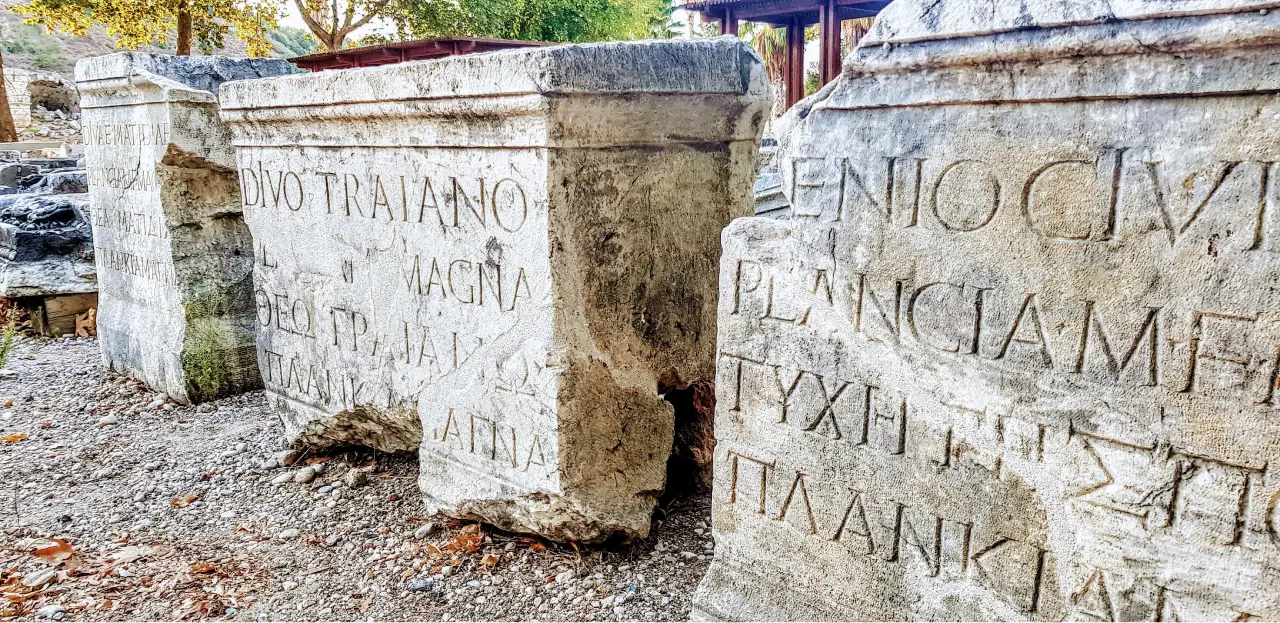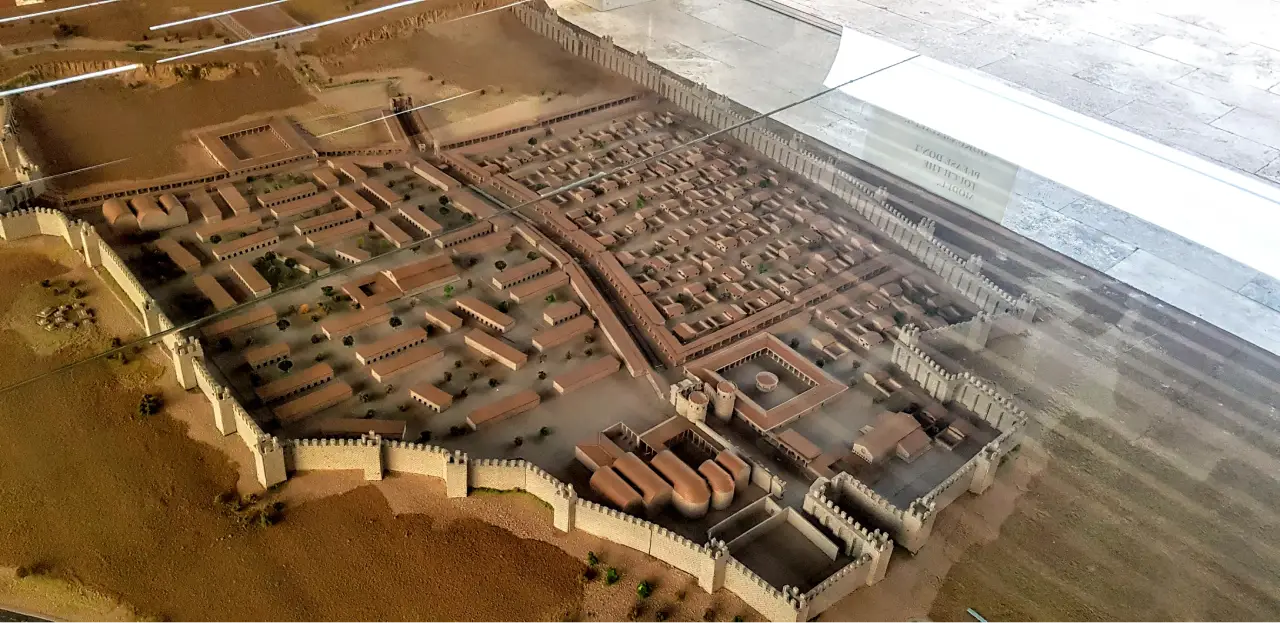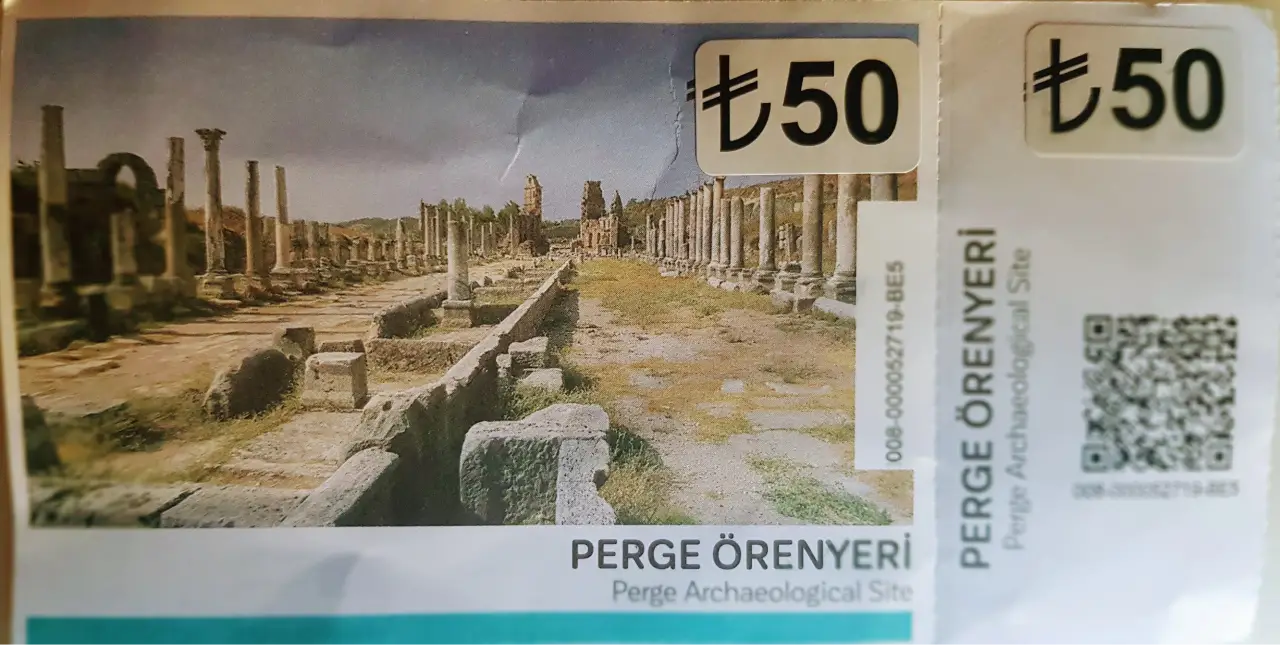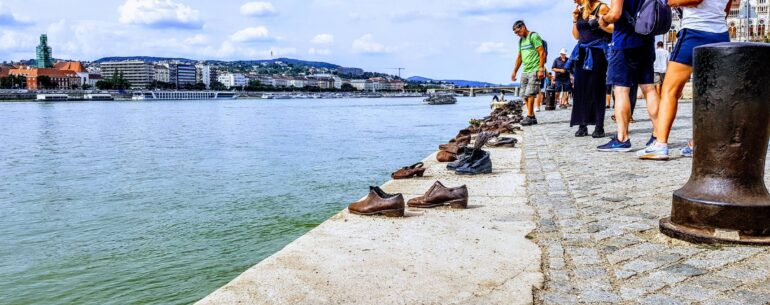I first read about Perge at school so seeing this place has been on the visit list for years – however, I didn’t realise it was quite so close to Antalya. If you’re on holiday in the area, this place is definitely worth going to. Scroll past the booking links to get a guide to visiting Perge ancient city in Turkey.
Alternatively, check out other summer guides and winter guides on the iRide website.
Book your next Antalya holiday now
We’ve teamed up with Booking.com to bring you the most extensive range of accommodation in the world’s best resorts. Use the form below to search for the latest deals.
Booking.comCheck and book Antalya flights
Flightradar is one of the best online flight search engines, checking all the major airlines and sites (including Skyscanner). Search and book flights below.
Book an organised tour to Perge and Aspendos
A Brief History of Perge
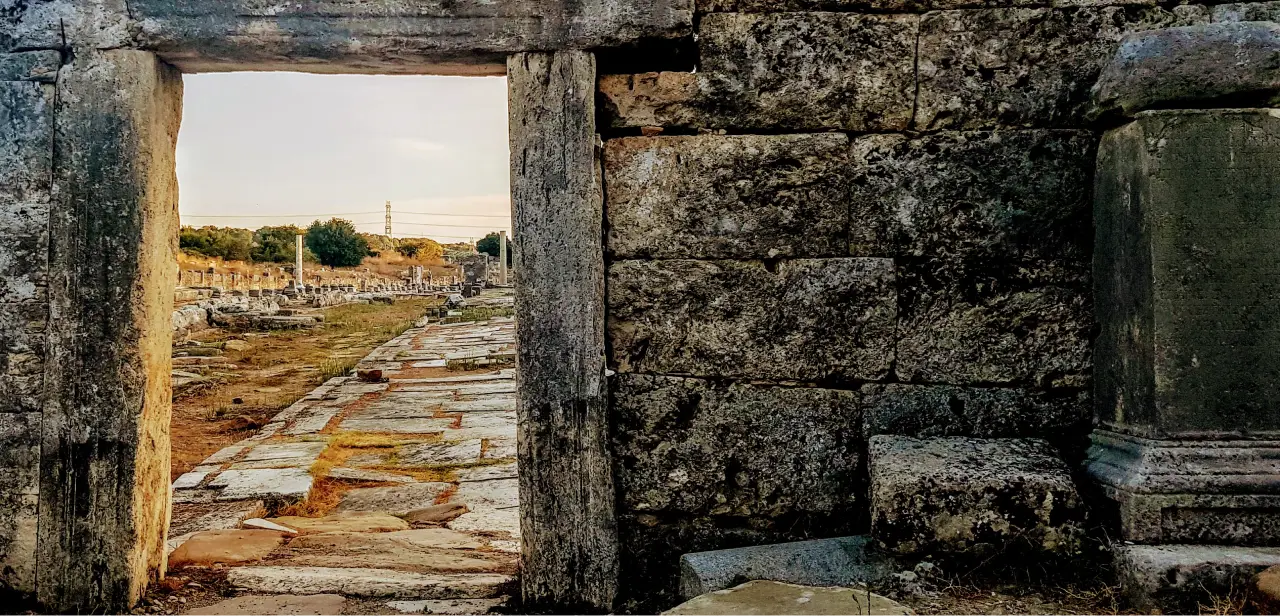
Perge, originally known as Perga, was an ancient Greek city founded around 1000 BC. It flourished under the rule of various civilizations, including the Greeks, Romans, and Byzantines, before eventually falling into decline in the Middle Ages. Today, Perge stands as a testament to its rich past, with its well-preserved ruins offering glimpses into the daily life and architectural prowess of its former inhabitants.
Discovering Perge: Must-See Attractions
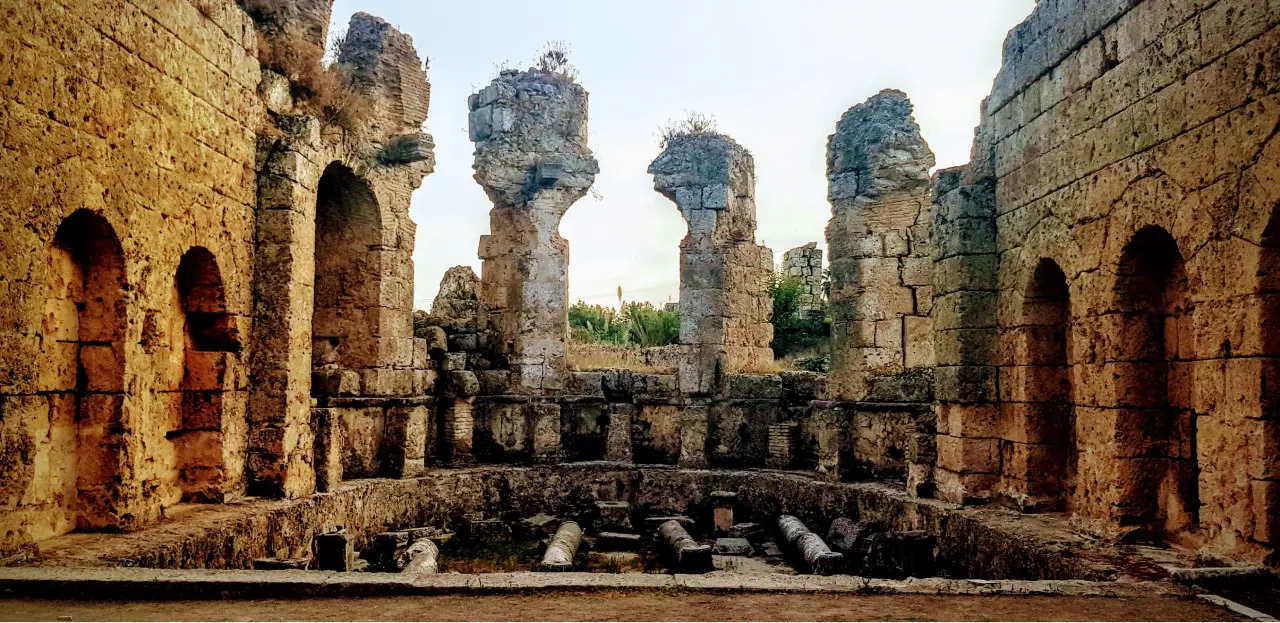
Personally I could have spent hours wandering around this ancient city – and they’re still excavating new areas which just makes me want to go back. Some of the current standouts include:
- Theatre: Explore the impressive Roman theatre of Perge, which once seated up to 15,000 spectators. Admire its well-preserved stage, orchestra, and seating tiers, and imagine the performances and festivals that once took place within its walls.
- Stadium: Marvel at the ancient stadium of Perge, one of the best-preserved examples of its kind in Turkey. Take a stroll along its length, measuring over 200 meters, and envision the athletic competitions and games that were held here in ancient times.
- Agora: Wander through the remains of the ancient agora, or marketplace, where merchants and traders once conducted business. Explore its colonnaded streets, shops, and public buildings, and imagine the bustling activity that once filled this bustling hub of commerce.
- Baths: Visit the ruins of the Roman baths of Perge, where residents would come to relax, socialize, and cleanse themselves. Admire the intricate mosaics, marble columns, and heating systems that once adorned these luxurious bathing complexes.
- Statues and Sculptures: Admire the statues and sculptures that dot the landscape of Perge, including depictions of gods, goddesses, emperors, and mythological figures. Marvel at the craftsmanship and artistry of these ancient works of art, which offer insights into the religious beliefs and cultural values of the people of Perge. Note – many of these relics have since been transferred to the Museum of Antalya.
- City Walls: Take a walk along the ancient city walls of Perge, which once encircled the entire settlement for protection. Admire the impressive fortifications, towers, and gates that still stand today, providing a glimpse into the city’s defensive strategies and urban layout.
Gallery of images, Perge
The Historical Significance of Perge in Hadrian’s Era
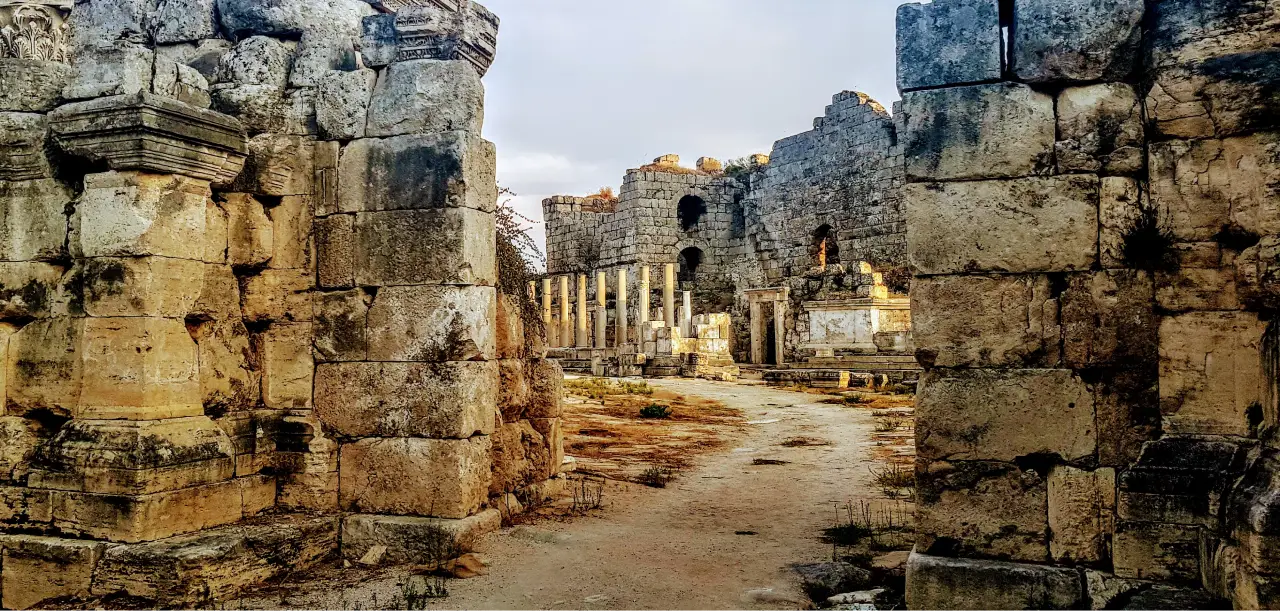
Perge held significant importance during the reign of Emperor Hadrian in the Roman Empire. During Hadrian’s rule, from 117 to 138 AD, he focused more on consolidating the existing territories of the Roman Empire rather than expanding its borders further. Perge played a crucial role in Hadrian’s efforts to solidify Roman control over its vast territories and maintain stability within the empire.
Hadrian’s Approach to Empire-Building
- Consolidation of Territories: Hadrian’s reign was marked by a policy of consolidation rather than expansion. He believed in fortifying existing borders and ensuring the security and stability of the Roman Empire’s vast territories.
- Construction of Defensive Walls: Hadrian is best known for the construction of Hadrian’s Wall in Britain, which served as a defensive barrier against invasions from the north. This monumental feat of engineering symbolized Hadrian’s commitment to protecting the empire’s borders and maintaining peace and order within its territories.
- Emphasis on Diplomacy and Administration: Instead of waging costly military campaigns to expand the empire, Hadrian focused on diplomacy and efficient administration to manage internal affairs and resolve conflicts with neighboring states. He believed in fostering good relations with neighboring powers to prevent conflicts and maintain stability.
- Promotion of Roman Culture and Identity: Hadrian encouraged the spread of Roman culture and identity throughout the empire, promoting the adoption of Roman customs, language, and laws among diverse populations. By fostering a sense of unity and common identity among its subjects, Hadrian sought to strengthen the cohesion of the empire.
The Role of Perge in Hadrian’s Reign
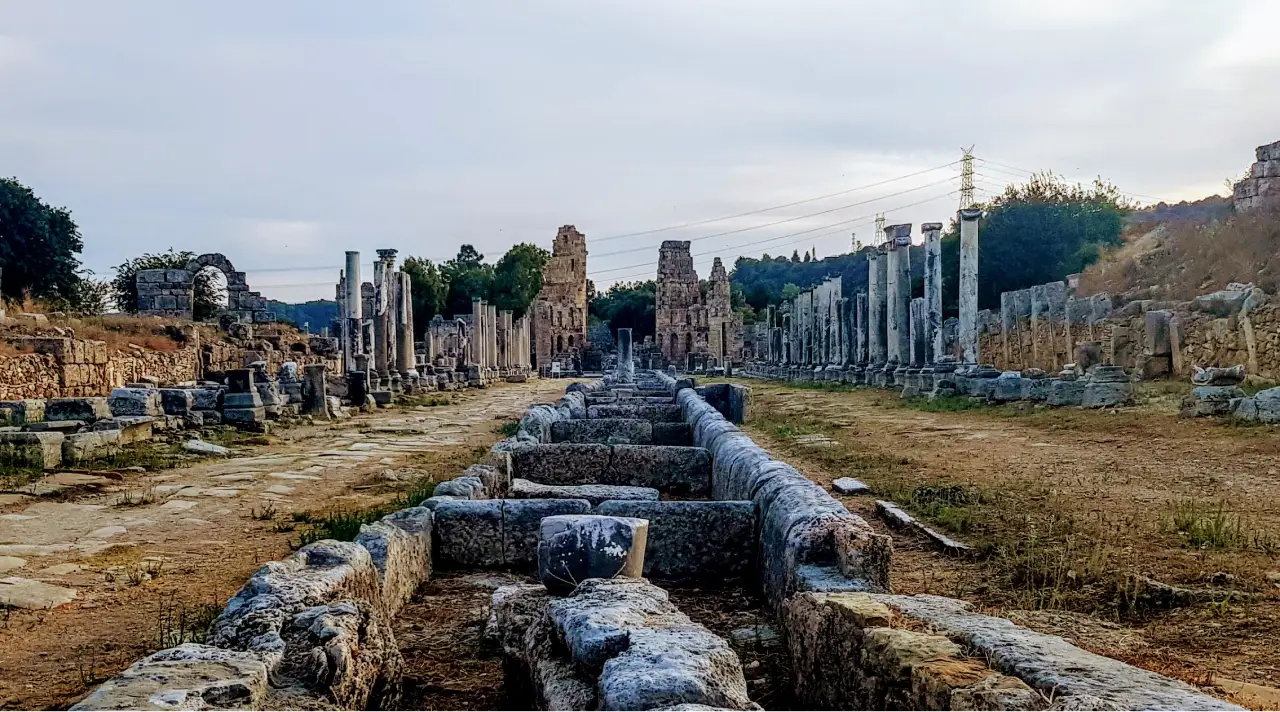
Perge, as one of the prominent cities in the eastern provinces of the Roman Empire, played a significant role in Hadrian’s efforts to consolidate Roman control over the region.
- Strategic Location: Perge was strategically located along major trade routes and served as a key economic and political center in the region. Its proximity to the Mediterranean Sea made it an important hub for maritime trade and commerce.
- Cultural and Religious Center: Perge was renowned for its cultural and religious significance, boasting impressive monuments, temples, and theatres dedicated to various gods and goddesses. These architectural marvels reflected the city’s prosperity and influence in the eastern provinces of the empire.
- Hadrianic Reforms and Infrastructure: Under Hadrian’s rule, Perge experienced a period of prosperity and development, with the emperor investing in infrastructure projects and urban renewal initiatives to enhance the city’s infrastructure and public amenities.
- Symbol of Roman Authority: Perge served as a symbol of Roman authority and power in the eastern provinces, showcasing the empire’s influence and control over distant territories. The city’s well-preserved ruins and monuments stand as a testament to its historical significance during the reign of Emperor Hadrian.
Travelling to Perge
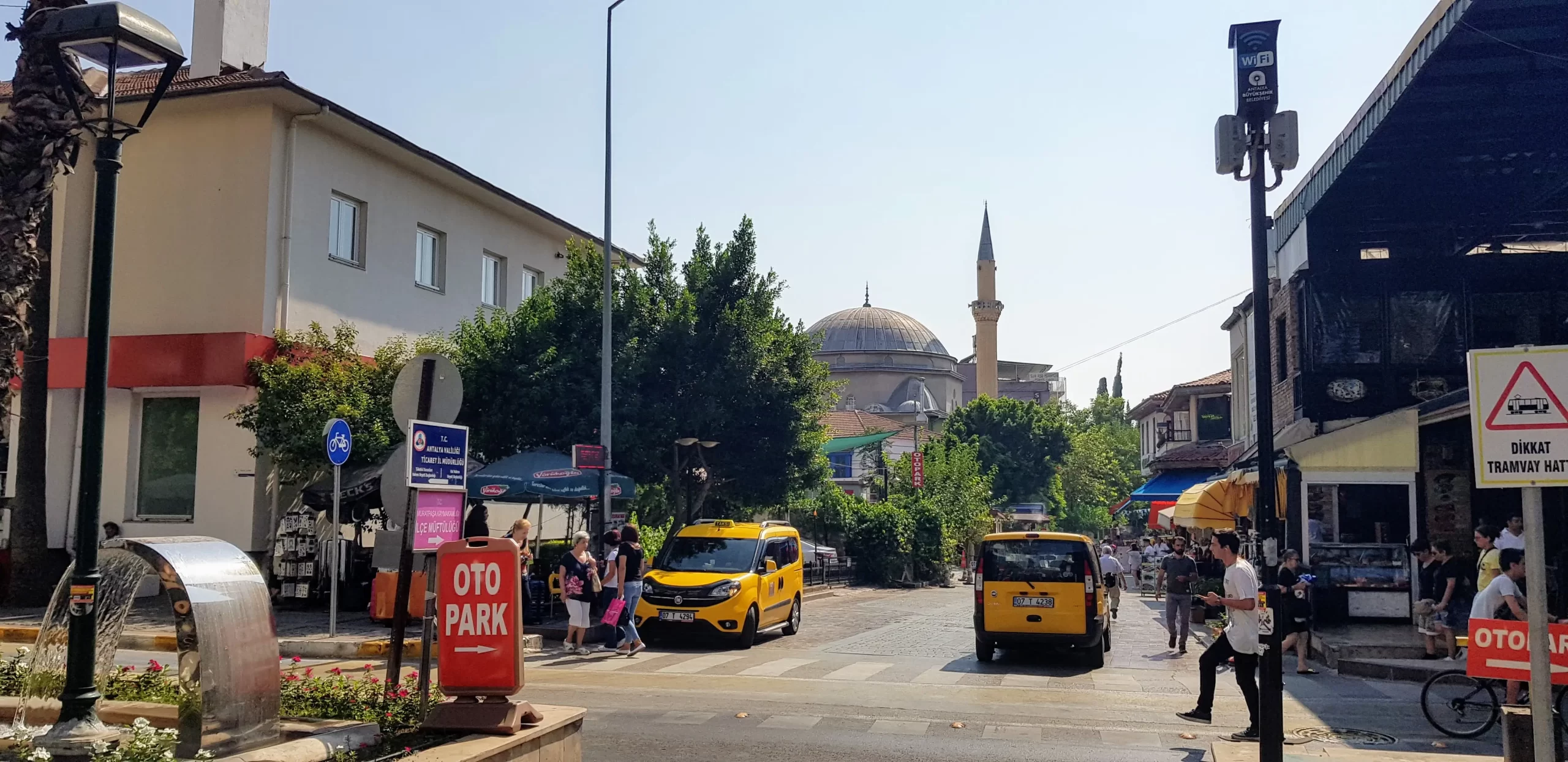
Travelling to Perge is convenient, as the archaeological site is located just 18 kilometers east of the city of Antalya on Turkey’s Mediterranean coast. Visitors can reach Perge by car via the D400 highway, which offers easy access from Antalya and other nearby towns and cities. Additionally, Perge is accessible by public transport, with regular bus services running from Antalya to the site. It’s also possible to hire a taxi for an afternoon – but you should agree a price first rather than letting the driver run the meter. Once at Perge, visitors can explore the ruins on foot, with guided tours available for those who wish to learn more about the site’s history and significance.
You can find more great things to do in Antalya and its environs on this link.

